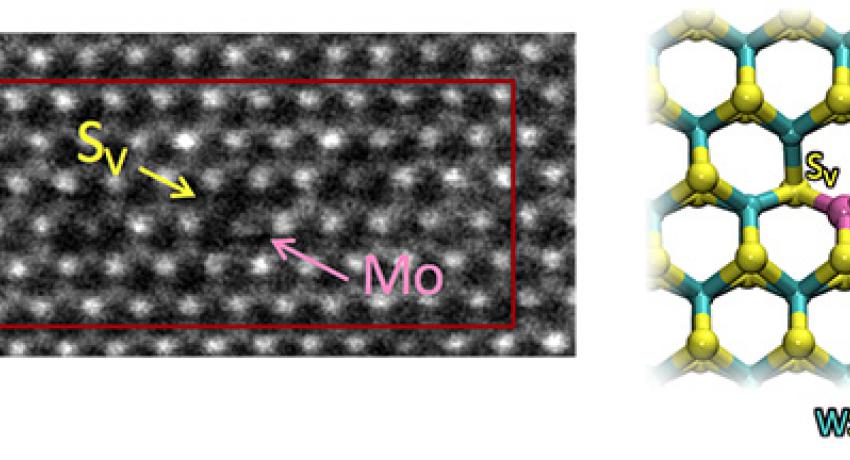What Has Been Achieved:
A new type of strong coupling between isoelectronic substitutional dopants (Mo dopants) and common lattice defects (sulfur vacancies) has been identified in WS2 by their ~80% probability of co-localization using aberration-corrected scanning transmission electron microscopy. The coupling mechanism and the Mo dopant’s ability to facilitate the charging of sulfur vacancies is identified using first-principles density functional theory calculations.
Importance of Achievement:
Innocuous isoelectronic dopants can act as “vacancy collectors” that attract undesirable vacancies to inactive areas of a 2D chalcogenide device, thanks to their strong coupling with vacancies.
Unique Features of the MIP That Enabled Project:
Close collaboration between synthesis, characterization, and theory efforts.
Publication:
A. Azizi, Y. Wang, G. Stone, A. L. Elias, Z. Lin, M. Terrones, V. H. Crespi, and N. Alem, “Defect Coupling and Sub-Angstrom Structural Distortions in W1–xMoxS2Monolayers”, Nano Lett. 17, 2802 (2017).
Left Image Title: Electron Microscope Image. Left Image Caption: A sulfur vacancy can be seen to pair with a molybdenum dopant in a electron microscope image. Right Image Title: Defect-Pair Structure. Right Image Caption: Defect-pair structure is confirmed by quantum chemical calculations as shown in the right panel.
Credits/Names: Azizi, Wang, Stone, Elías, Lin, Terrones, Crespi, Alem, Penn State
Download PDF Version: MIP-2DCC-1539916_CouplingDistinctDefectSpecies_2017.pdf
Year of Research Highlight: 2017
Select a Highlight Type: In-House Research Highlight
